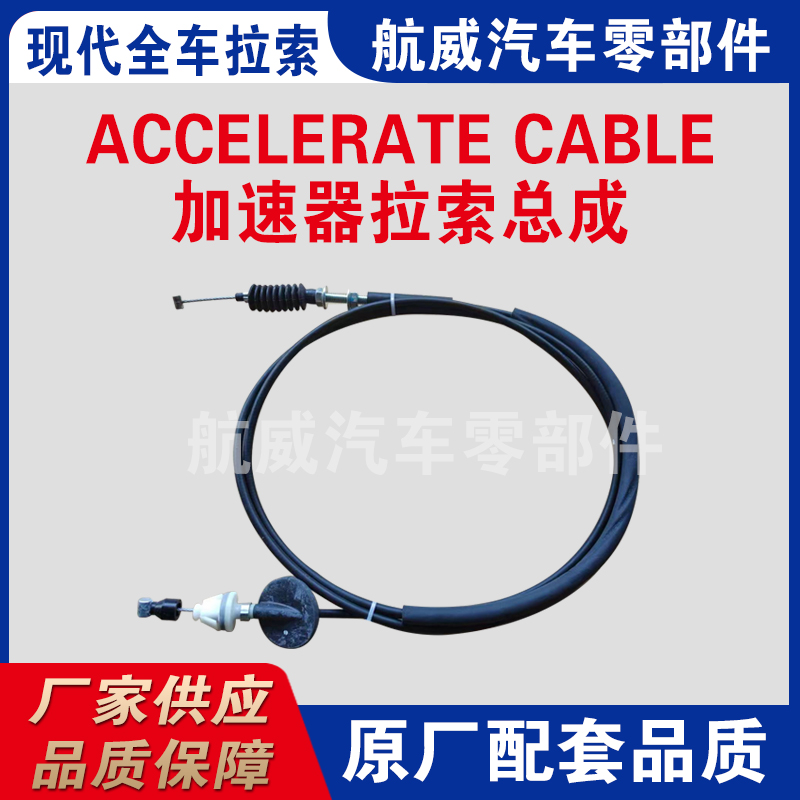Car Gear Cable Replacement and Maintenance Guide for Smooth Shifting and Performance
Understanding Car Gear Cables Function, Maintenance, and Replacement
Car gear cables play a crucial role in the operation of a vehicle's transmission system. These cables connect the gear lever inside the car to the gearbox, allowing the driver to shift gears smoothly. While often overlooked, the gear cable is an essential component that affects not just the efficiency of gear shifting but also the overall driving experience. In this article, we will explore the function of car gear cables, the importance of regular maintenance, common issues, and how to replace them when necessary.
How Car Gear Cables Work
Car gear cables are typically made of flexible materials that enable them to withstand the rigors of movement and heat. When the driver moves the gear lever, the cable transmits this movement to the gearbox, engaging the desired gear. The cable’s design allows for minimal friction and maximum flexibility, ensuring that gear shifts are seamless and responsive.
In modern vehicles, gear cables can be either mechanical or electronic. Mechanical cables rely on physical movement, while electronic systems use sensors and actuators to control the gearbox. Regardless of the type, the fundamental purpose remains the same to facilitate smooth gear transitions during driving.
Importance of Maintenance
Like any other component of a vehicle, gear cables require regular maintenance to ensure optimal performance. Over time, cables can wear out, fray, or become stiff, leading to a decrease in responsiveness and even complete failure in extreme cases. Regular inspections can help identify potential issues early on, preventing costly repairs later.
Maintenance tips for car gear cables include
1. Regular Inspections Check for signs of wear, such as fraying or stiffness in the cable. Look for any visible damage or corrosion at the connection points.
2. Lubrication Applying a high-quality lubricant to the cable can reduce friction and prevent stiffness. This can enhance the smoothness of gear changes.
3. Adjustment Some gear cables may require periodic adjustments to ensure proper tension. Refer to the vehicle's service manual for specific recommendations.
4. Cleaning Dirt and debris can accumulate around the gearbox and cable ends. Regularly cleaning these areas can help maintain smooth operation.
Common Issues with Gear Cables
Several common issues can arise with car gear cables, which can affect vehicle performance
car gear cable

- Stiff Gear Changes This can be a symptom of a worn-out or poorly lubricated cable. Stiffness can make shifting gears difficult and lead to frustration while driving.
- Gear Slippage If the cable is not properly adjusted, it may fail to hold the selected gear, resulting in slippage. This can be dangerous, especially in high-speed situations.
- Fraying or Breaking Over time, the cable can fray or even break, resulting in a complete inability to change gears. This is a critical issue that requires immediate attention.
- Binding If the cable becomes pinched or obstructed, it may not function correctly, leading to delayed or unresponsive gear changes.
Replacing Car Gear Cables
If a gear cable is found to be damaged or worn beyond repair, replacement becomes necessary. Here’s a general guide on how to replace a car gear cable
1. Gather Tools and Materials You will need basic hand tools (like wrenches and screwdrivers), a replacement gear cable, and possibly some lubricant.
2. Access the Cable This may require removing the gear lever cover or accessing the underside of the vehicle, depending on the make and model.
3. Disconnect the Old Cable Carefully detach the existing cable from the gear lever and gearbox, taking note of how everything is connected for reference.
4. Install the New Cable Connect the new cable in the same manner as the old one. Ensure that it is properly routed and secured to avoid future issues.
5. Test the Gear Shifts Once installed, test the vehicle in a safe environment to make sure the new cable functions correctly and that shifting gears is smooth.
Conclusion
Car gear cables may be a small component within the complex machinery of a vehicle, but they are vital for ensuring the driver can shift gears effortlessly. Regular maintenance and awareness of potential issues can significantly prolong the life of the gear cables and enhance the driving experience. When the time comes for replacement, following the proper steps can make the process straightforward, ensuring that the vehicle continues to perform optimally. By giving attention to car gear cables, drivers can enjoy a more responsive and enjoyable ride.
-
Upgrade Your Control with Premium Throttle CablesNewsAug.08,2025
-
Stay in Control with Premium Hand Brake CablesNewsAug.08,2025
-
Experience Unmatched Performance with Our Clutch HosesNewsAug.08,2025
-
Ensure Safety and Reliability with Premium Handbrake CablesNewsAug.08,2025
-
Enhance Your Vehicle with High-Performance Clutch LinesNewsAug.08,2025
-
Elevate Your Ride with Premium Gear CablesNewsAug.08,2025
